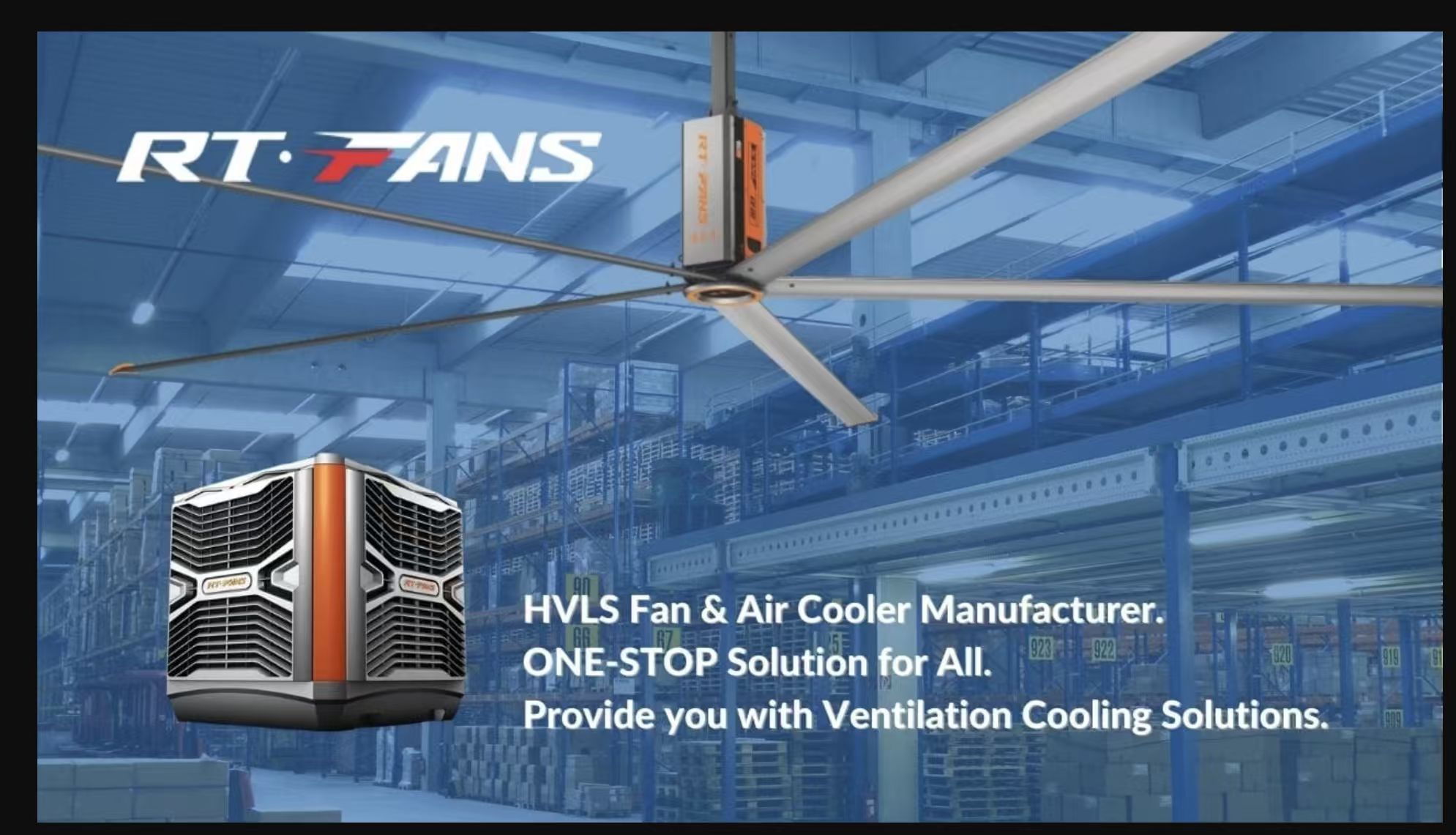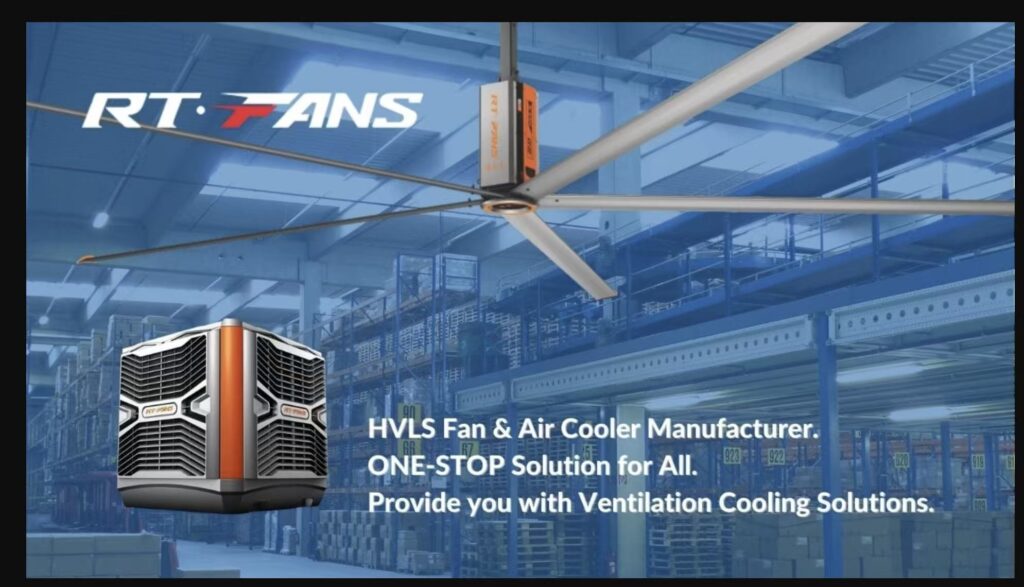Assemblies, examinations, and activities in school halls are multifamily, and comfortable temperatures are necessary for student concentration and health. The efficient cooling of large places, high ceilings, and fluctuating occupancy are usually a problem for school administrators. The argument that air conditioners are better than ceiling fans is based on cost and efficiency, and sustainability. Although both are applicable in the cooling of school halls, the use of industrial ceiling fans, especially the High-Volume Low-Speed (HVLS) fans, tends to be more reasonable, cost-effective, and environmentally friendly in school halls. They also occupy a wide space, conserve up to 30 percent of the energy consumed in supplementing AC, and they pay back within 18-24 months of installation, hence they are a good option among the low-cost educational institutions. Now we are going to speak about special issues of school halls and their detailed comparison to make your decision.
Unique Challenges of Cooling School Halls

The space occupied by school halls is usually between 5,000 and 10,000 square feet and has a height of between 15-30 feet, and therefore, the warm air stratifies at the top of the enclosed space and traps it (Schultra). Large events like graduations or assemblies (typically 200-500 attendees) overload the body with heat and CO 2, making it stuffy, which disrupts focus. The studies conducted by the EPA on IAQ in schools have indicated that poor air quality in schools may reduce student cognitive performance by 15 percent.
Cooling options are complicated by cost limitations and energy efficiency requirements, including those imposed by the U.S. Department of Energy. Conventional AC systems are not able to handle these large volumes and usually may be costly and uneven heating, where fans are a complementary or independent option.
Comparing Ceiling Fans and Air Conditioners

To find out which is smarter between ceiling fans and air conditioners in school halls, we should compare some of the most important considerations: the cost of installation, consumption, coverage, maintenance, comfort, noise, and sustainability. HVLS fans see the daylight in open areas, whereas AC offers more profound cooling, and a hybrid solution is often the best.
Installation Cost
Ceiling Fans: HVLS fans range in price from 5000 to 15,000 per unit, and installation expenses are between 1000 and 3000, depending on the ceiling height. Two to three fans cost a hall of 6,000 square feet up to $15,000 to $45,000. They need a few structural modifications and can be retrofitted.
Air Conditioners: School halls often have central air conditioning (Central AC) with a price range of 20,000-100,000 or more, including ducts and electrical work. It can require weeks to install and can interfere with school operations, and the initial costs of energy-efficient models meeting ASHRAE standards are higher.
Verdict: Fans cost less to install, as they are suitable for schools with limited budgets.
Energy Use
Ceiling Fans: HVLS fans use less than 1.5 kW and have large coverage. By destratifying, they save 20-30 percent of the HVAC energy, and in summer alone, they save 4 percent of the energy required to change the thermostat one degree.
A medium hall can save up to 2000-5000 annually.
Air Conditioners: AC systems consume 5-20 kW or higher in large areas, and their maintenance is high. They are accurate coolers, but use much more power; fans require approximately 1% of AC power.
Verdict: Fans are more energy-conserving, particularly during mild temperatures or as an AC supplement.

Coverage Area
Ceiling Fans: 120 ft HVLS Fans: 15,000-20,000 ft ceiling fans are used in auditoriums. They offer even air circulation and no hot spots.
Air Conditioners: ACs cool a large area through ducts but can provide uneven cooling when designed poorly, and more than one unit is needed to cool a hall.
Verdict: Fans can be better used in open halls that are high-ceiled.
Maintenance
Ceiling Fans: Maintenance: Blades will require annual cleaning and motor inspection, which lasts 15-20 years. Costs under $500/year.
Air Conditioners: These need frequent replacement of filters, refrigerants, and repairs, costing 1,000-3,000 a year, and have a shorter lifespan (10-15 years) in places where they are used frequently.
Verdict: Fans are less expensive and less difficult to maintain.

Comfort Levels
Ceiling Fans: Provides 5-7 deg F wind-chill comfort without dehumidification. Suited to assemblies that require rapid cooling.
Air Conditioners: Cooling is deeper, but may cause cold drafts and dry air, which are uncomfortable in changing occupancy.
Verdict: Fans improve natural comfort, particularly in conjunction with AC.
Noise
Ceiling Fans: Lower than 35 dB, no noise when speaking or on an exam.
Air Conditioners: Can go up to 50-70 dB and disrupt events.
Verdict: Educational settings are less loud with fans.
Sustainability
Ceiling Fans: Cut carbon emissions by consuming less energy, and are in line with both LEED and ENERGY STAR school requirements.
Air Conditioners: Efficiency models can alleviate higher energy consumption, resulting in bigger footprints.
Verdict: Fans are more environmentally friendly, energy efficient in schools.
How Fans Complement AC Systems

HVLS fans will not replace AC, but will be used along with it in hybrid school hall cooling systems. Base cooling in hot climates is performed by AC, and air is distributed by fans, saving 20-30% of AC run time. In the case of a school hall, this hybrid would save $3,000-6,000 per year. The Department of Energy guidelines suggest that fans in large areas should be used to improve AC efficiency.
ROI and Payback Periods
ROI of HVLS fans is achieved between 6-24 months.
A hall costs between $15,000 and $45,000 to install, and saves between 2,000 and 5,000 a year in HVAC costs. The payback period is 1-3 years, quicker in high energy cost regions.
AC upgrades are more expensive, at $50,000 +, and have a longer ROI.

Realistic Examples
- Exam Halls: A 4,000-square-foot hall with air conditioning was not enough to feel cool during the finals. With the addition of HVLS fans, there was a 15 percent decrease in distractions.
- Graduation Ceremonies: In a high-occupancy event hall, fans were used to move air to the area to avoid heat strain and to keep 500 people comfortable.
- Daily Assemblies: a school auditorium that was fitted with an AC that also used fans saved 4000 dollars each year, keeping the place cool enough to have mornings together.
FAQ: Common Questions About Cooling School Halls
- Can ceiling fans replace AC in schools?
Yes in mild climates, but no in hot regions, fans supplement AC in air-conditioned schools compared to ceiling fans, saving 20-30%. - Are HVLS fans noisy?
No, HVLS fans produce less noise than AC, at less than 35 dB, and are therefore the best cooling option for a school auditorium.
What’s the cost difference?
HVLS fans range between 5,000 and 15,000 per unit compared to AC systems ranging between 20,000 and 100,000, and the fans are much faster to recoup through energy savings.
Conclusion
Whereas AC may provide more effective cooling, HVLS ceiling fans may be wiser in school halls due to lower cost, performance, and durability. Schools can be advised to balance industrial ceiling fans as a better alternative that is eco-friendly, either alone or with AC. RTFANS is an HVLS with 20 years of experience in education for fans. We are calling now, and you need to make your school’s ventilation energy efficient so that the success of your school starts with comfort.

